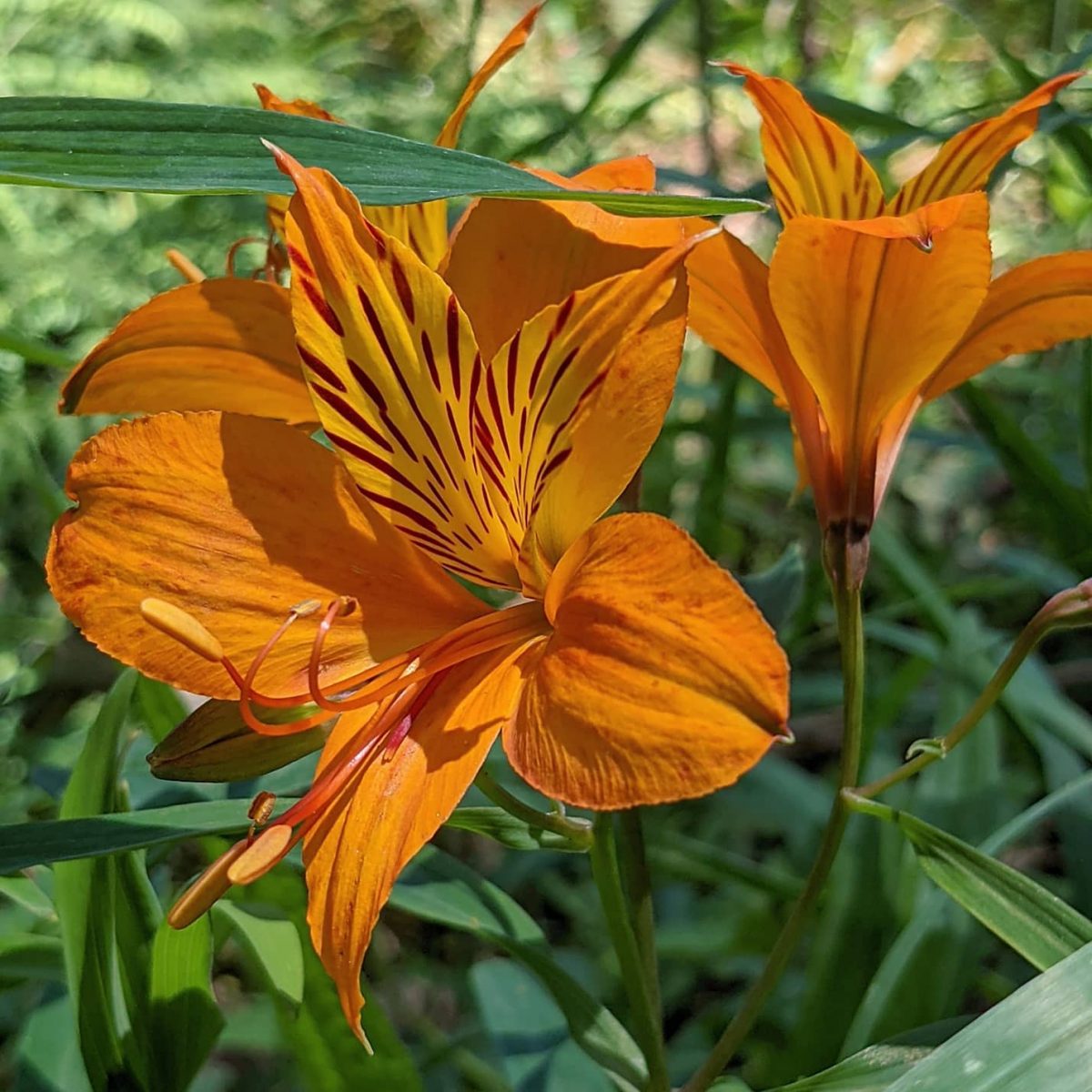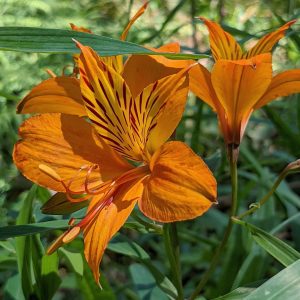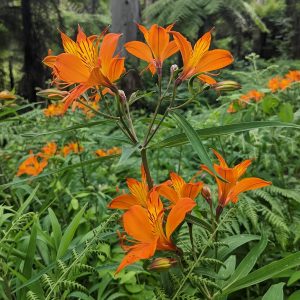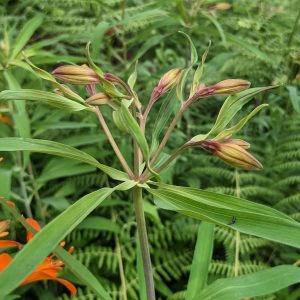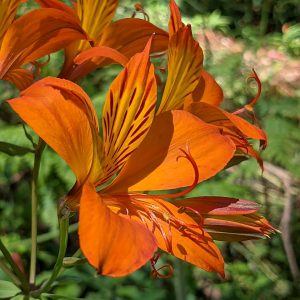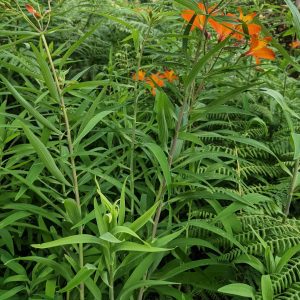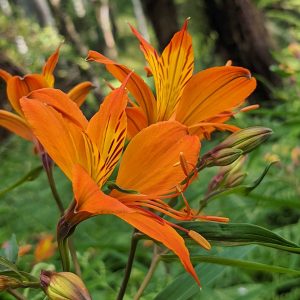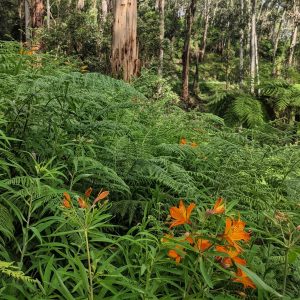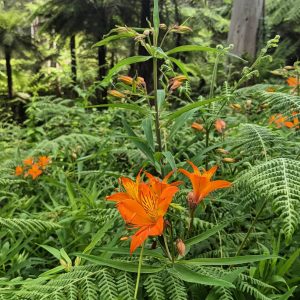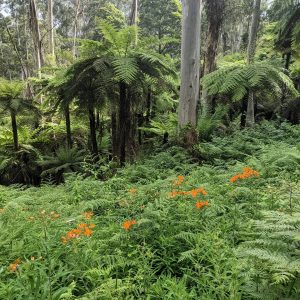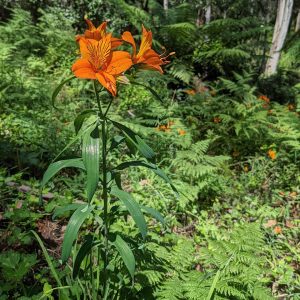Peruvian Lily (Alstroemeria aurea), one of a group of tuberous flowering plants native to South America which have been widely adopted into horticulture and floriculture around the world.
Although attributed to Peru, the species and a good part of the genus actually originates in Chile. Available in Australia from at least the 1860s as an ornamental bulb, the plant according to one interwar columnist was ‘not at one time very beautiful. The flowers were quaint, but that was all one could say about them. Described in the early 1920s as a ‘lesser-known bulb’, by the 1930s new varieties had made it ‘nearly as popular as the Iceland poppy as a cut flower, and … even more easily grown.’ Demanding rich, deep soils, the flowers’ popularity presumably also advanced with an affluent new generation making a life on Melbourne’s eastern fringe.
Escaping onto New Zealand’s roadsides outside of Wellington at least as early as 1945, in Victoria, this lily appears to have first naturalised out of the Memorial Cross garden on Mount Macedon, where it was collected in 1967 invading adjacent woodland. A population remains on Macedon today, and has been spread to other sites within that range by visitor or maintenance activity.
Elsewhere, the species was recorded at Lysterfield Park in 1976, in coastal scrub at Barwon Heads in 1983, and becoming more widespread in damp forests of the Dandenongs, eastern ranges and Victorian Alps during the 1990s. The photographed plants form a dense infestations on steep forest slopes below the Selby-Aura Road, east of Belgrave.
View Original Post on Instagram
Search for information about Alstroemeria aurea in the Flora of Victoria
View information and occurrences of Alstroemeria aurea on the Atlas of Living Australia
